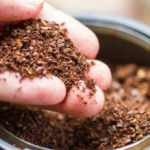If you love spicy food, chances are you’ve heard about the famous habanero_pepper. Known for its intense heat and fruity flavor, the habanero pepper adds excitement to many dishes across cultures. But how hot is a habanero_pepper really? And is it good for you?
In this article, we’ll explore everything you need to know about the habanero_pepper, including its heat level on the Scoville scale, health benefits, growing techniques, and even some delicious habanero pepper recipes. Whether you’re a heat-seeker or just curious about spicy ingredients, this guide has you covered.
What Is a Habanero Pepper?
 The habanero_pepper is a small, lantern-shaped chili pepper that packs a serious punch. It originates from the Amazon region and is now widely grown in Mexico, Central America, and the southern United States. The habanero_pepper is popular for its fruity aroma and a spicy kick that makes it a staple in hot sauces, marinades, and salsas.
The habanero_pepper is a small, lantern-shaped chili pepper that packs a serious punch. It originates from the Amazon region and is now widely grown in Mexico, Central America, and the southern United States. The habanero_pepper is popular for its fruity aroma and a spicy kick that makes it a staple in hot sauces, marinades, and salsas.
While it comes in various colors—including green, orange, red, and even brown—the most common type is the orange habanero. Each color represents a different level of ripeness and subtle flavor differences.
Growing a Habanero Pepper Plant
If you’re into gardening, you’ll be glad to know that growing a habanero pepper plant at home is totally doable—even if you’re a beginner.
🌱Basic Growing Tips:
-
Climate: Habaneros love warmth. They thrive in temperatures between 70°F and 90°F.
-
Sunlight: Full sun is crucial for optimal growth.
-
Soil: Well-draining soil with pH between 6.0 and 6.8.
-
Watering: Keep the soil consistently moist but never soggy.
-
Harvest Time: Typically, it takes about 90–100 days from planting to harvest.
🌱 Habanero Pepper Seeds:
You can buy habanero_pepper seeds online or from garden stores. For best results, start them indoors 6–10 weeks before the last frost date.
Habanero Pepper Scoville: How Hot Is It?
One of the most talked-about features of the habanero_pepper is its heat. But just how hot is a habanero_pepper?
On the Scoville scale, which measures the spiciness of chili peppers, the habanero_pepper ranges between 100,000 to 350,000 Scoville Heat Units (SHU). To put that into perspective, a jalapeño pepper only reaches about 2,500 to 8,000 SHU.
Comparison Chart:
| Pepper Type | Scoville Heat Units (SHU) |
|---|---|
| Bell Pepper | 0 |
| Jalapeño | 2,500–8,000 |
| Serrano | 10,000–23,000 |
| Cayenne | 30,000–50,000 |
| Habanero | 100,000–350,000 |
| Ghost Pepper (Bhut) | 800,000–1,000,000+ |
Types of Habanero Pepper
There’s more than one type of habanero_pepper. Each variety has its own taste, color, and heat profile.
🔴 Red Habanero Pepper
Red habaneros are slightly hotter than the orange ones and have a bolder, more savory flavor. These are ideal for hot sauces and fiery salsas.
🟢 Green Habanero Pepper
Green habaneros are unripe and have a tangier, fresher taste. While they are still spicy, they often carry slightly less heat than their fully ripened counterparts.
Habanero Pepper Benefits
You might be surprised to learn that the habanero_pepper is more than just a spicy ingredient. It actually comes with some impressive health benefits.
🌶️ Health Perks:
-
Rich in Vitamins: Especially vitamin C and vitamin A, both essential for immune health and skin.
-
Boosts Metabolism: The capsaicin in habanero_pepper helps to increase calorie burn.
-
Pain Relief: Capsaicin also plays a role in reducing inflammation and chronic pain.
-
Improves Digestion: Spicy foods like habanero can aid in digestion and gut health.
-
Fights Infection: Its natural antibacterial properties help ward off certain types of bacteria.
Cooking with Habanero Pepper: Recipes You’ll Love
 Because of its fiery nature, the habanero_pepper is used in small amounts—but a little goes a long way. It’s perfect for making flavorful, spicy dishes that stand out.
Because of its fiery nature, the habanero_pepper is used in small amounts—but a little goes a long way. It’s perfect for making flavorful, spicy dishes that stand out.
👨🍳 Popular Habanero Pepper Recipes:
-
Habanero Hot Sauce: Blend habaneros with vinegar, garlic, and salt for a spicy condiment.
-
Mango Habanero Salsa: A tropical salsa made with diced mango, onion, lime, and habanero.
-
Spicy Chicken Marinade: Add minced habanero to olive oil, lime juice, and herbs for a zesty marinade.
-
Habanero Pepper Powder Rub: Dry and grind habanero to make a powder for rubs and seasoning.
Warning: Always wear gloves when chopping habaneros to avoid skin irritation.
Habanero Pepper Powder: A Spicy Pantry Staple
If you’re not ready to handle fresh habaneros, habanero pepper powder is an excellent alternative. It’s easy to store and perfect for:
-
Rubbing on meats
-
Sprinkling over pizza or pasta
-
Mixing into soups or stews
Just remember—it’s very potent, so use it sparingly!
How to Store Habanero Peppers
Proper storage ensures that you can enjoy your habanero_peppers for longer without sacrificing flavor or heat.
Storage Methods:
-
Refrigeration: Store fresh habaneros in a plastic bag in the crisper drawer. They’ll last up to two weeks.
-
Freezing: Chop and freeze them in an airtight container.
-
Drying: Use a dehydrator or oven to make dried habanero_pepper for grinding into powder.
Bio Table
| Fact | Info |
|---|---|
| Heat Level | 100K–350K SHU |
| Origin | Amazon → Mexico |
| Common Colors | Green, Red, Orange |
| Flavor | Fruity and fiery |
| Uses | Sauces, salsa, powder |
Conclusion
The habanero_pepper is much more than just a spicy ingredient—it’s a powerhouse of flavor and nutrition. From boosting your metabolism to adding excitement to your cooking, the habanero_pepper deserves a place in your kitchen and garden.
Whether you grow it, cook with it, or use it for its health benefits, there’s no denying that the habanero_pepper is one fiery gem in the world of food.
FAQs
1. How hot is a habanero pepper compared to a jalapeño?
A habanero_pepper is about 10 to 40 times hotter than a jalapeño based on the Scoville scale.
2. Can I grow a habanero pepper plant indoors?
Yes, with enough sunlight and warmth, you can grow it in pots indoors or in a greenhouse.
3. Are red habanero peppers hotter than green ones?
Yes, red habaneros are riper and generally pack more heat than the unripe green variety.
4. What are some good dishes to use habanero pepper in?
Try it in hot sauces, marinades, fruit salsas, or even chili. Just remember—less is more!
5. Is habanero pepper healthy to eat?
Yes! It’s packed with vitamins, boosts metabolism, and has antibacterial and anti-inflammatory properties.






